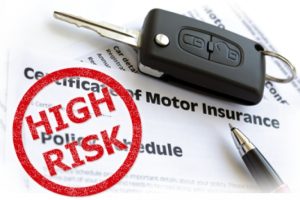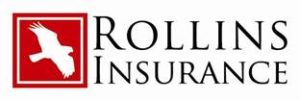 Okay, high-risk auto insurance (also known in the industry as nonstandard auto insurance) is the coverage you have to buy when an insurance company decides you’re more at risk of getting into an accident and filing a claim than the average driver. The drivers are not necessarily horrible drivers, but their records may include moving violations, at-fault accidents, DUIs or they may be young or older drivers. It is not impossible, but it is sometimes hard to find high-risk insurance. Also, if you are a high-risk driver you are looking to pay more for your coverage. You will need to look for a firm that can provide both competitive prices and quality service. Insurance companies keep track of many records and data – falling into a high-risk category of people who often compile bad driving records can reflect on your rate.
Okay, high-risk auto insurance (also known in the industry as nonstandard auto insurance) is the coverage you have to buy when an insurance company decides you’re more at risk of getting into an accident and filing a claim than the average driver. The drivers are not necessarily horrible drivers, but their records may include moving violations, at-fault accidents, DUIs or they may be young or older drivers. It is not impossible, but it is sometimes hard to find high-risk insurance. Also, if you are a high-risk driver you are looking to pay more for your coverage. You will need to look for a firm that can provide both competitive prices and quality service. Insurance companies keep track of many records and data – falling into a high-risk category of people who often compile bad driving records can reflect on your rate.
Will The High-Risk Category Premium Be More Expensive?
The auto insurance companies that insure high-risk clients take on more risk, and as a result, they tend to charge their high-risk clients significantly more than their low or medium-risk clients. The cost varies from state to state. Someone with a history of DUIs can expect to pay far more than they would for minor offenses such as tickets for talking on the phone while driving. There are many factors in high-risk car insurance because of circumstances of the reason for your high-risk category.
Below are considerations as to why one might be an at-risk driver
- DUI or DWI offense – If you’ve been convicted of driving or walking under the influence, your premiums will increase.
- Multiple tickets
- Young or first-time drivers
- Lapse in insurance coverage
- Poor credit
- Drivers 65 and older
- The severity of the violation
DUI Or DWI Convictions
Insurance companies will tag higher premium car insurance for DUI/DWI drivers because of the increased chances of another DUI/DWI accident. It will also take some time before the DUI stigma is removed or minimized to the point where you can return to your original insurance rates. These charges are the quickest method to be classified as a high-risk driver. State to State laws are involved with DUI and DWI Drivers. In all states, if you are proven guilty, your will need an SR-22 certificate – the “SR” stands for “safety responsibility.” This is a document that verifies that someone has automobile insurance. You will need this certificate from your insurance provider stating that you fulfilled the minimum financial responsibility criteria in order to obtain the insurance coverage required by law so that you can legally continue to drive.
Multiple Tickets
If, in the past three-to-five-year period, you receive too many tickets for speeding, running traffic lights, or other moving violations, your insurance company will recognize that you are an accident waiting to happen and are likely going to boost your rates. Due to this, your insurance provider will classify you as high-risk.
Young Or First Time Drivers
Research shows that due to a lack of experience behind the wheel, young drivers get into more accidents than the average adult, which puts young drivers into a higher risk category. This is the primary reason why young drivers pay a much higher premium for their insurance. If the young driver maintains a clean driving record, their insurance premium will gradually decrease until they reach the age of 25. At 25, they can shop for a lower premium. If you are a new driver and over the age of 25, you will also be considered high risk.
Lapse Of Insurance Coverage
Having a lapse in your car insurance automatically pegs you as a potential risk to insurance companies. For insurers, this type of risky behavior increases your likelihood of getting into a car accident. As a result of a lapse in coverage, your insurer will likely raise your rates. Based on our analysis, drivers with a coverage lapse of 30 days or less saw an 8% average car insurance rate increase. And those with a coverage lapse greater than 30 days saw an average premium increase of 35%.
Poor Credit
Your credit score is a key part of determining the rates you pay for car insurance. Better credit often gets you better rates, and worse credit makes your coverage more expensive. Poor credit could more than double insurance rates, according to a nationwide analysis of top insurers. Although ranges vary depending on the credit scoring model, generally credit scores from 580 to 669 are considered fair; 670 to 739 are considered good; 740 to 799 are considered very good, and 800 and up are considered excellent.
Drivers 65 And Older
Typically, auto insurance rates drop as drivers move into middle age, having acquired years of driving experience and loyalty discounts. Once drivers enter their 60s, however, the trend begins to slowly reverse as age and slower reflexes begin to impact driving. Insurers typically start to charge seniors the most significantly once they enter their 70s. An 80-year-old driver ends up paying a bit more than a 25-year-old.
The Severity Of The Violation
In all cases of driving violations increases in insurance rates directly correlate to the severity of the violation. There is a major difference between a minor infraction and a felony offense. It will impact not only how much you pay each month for insurance but also whether you are eligible for insurance at all.
Your ability to abide by the rules of the road is directly correlated to your rates for auto insurance. If you have a poor driving record that is spotted with serious violations that endanger the lives of others, then car insurance companies have the right to raise your insurance rates or refuse any coverage. If you do receive tickets, try to mitigate the damage by enrolling in driver improvement classes or taking a driver safety course. Your auto insurance will appreciate the gesture and may even offer a discount, and it can undo some of the damage that your prior infractions have caused.
Contact us (859-781-7283) for more information or get a free quote!
—
 About Rollins Insurance
About Rollins Insurance
Rollins Insurance is an independent insurance agency providing our clients the best prices with the most coverage possible since 2008. We represent multiple A-rated insurance companies to make sure we deliver the most competitive rate packages to our clients in Kentucky and Ohio. We find that most people are under-insured and over-paying when we meet them. We love what we do and our primary business is Personal Auto, Homeowners, and Life and Health insurance. We are a family-owned and managed business that specializes in providing needs-based insurance services.
>> Learn More About Us and Our Staff
